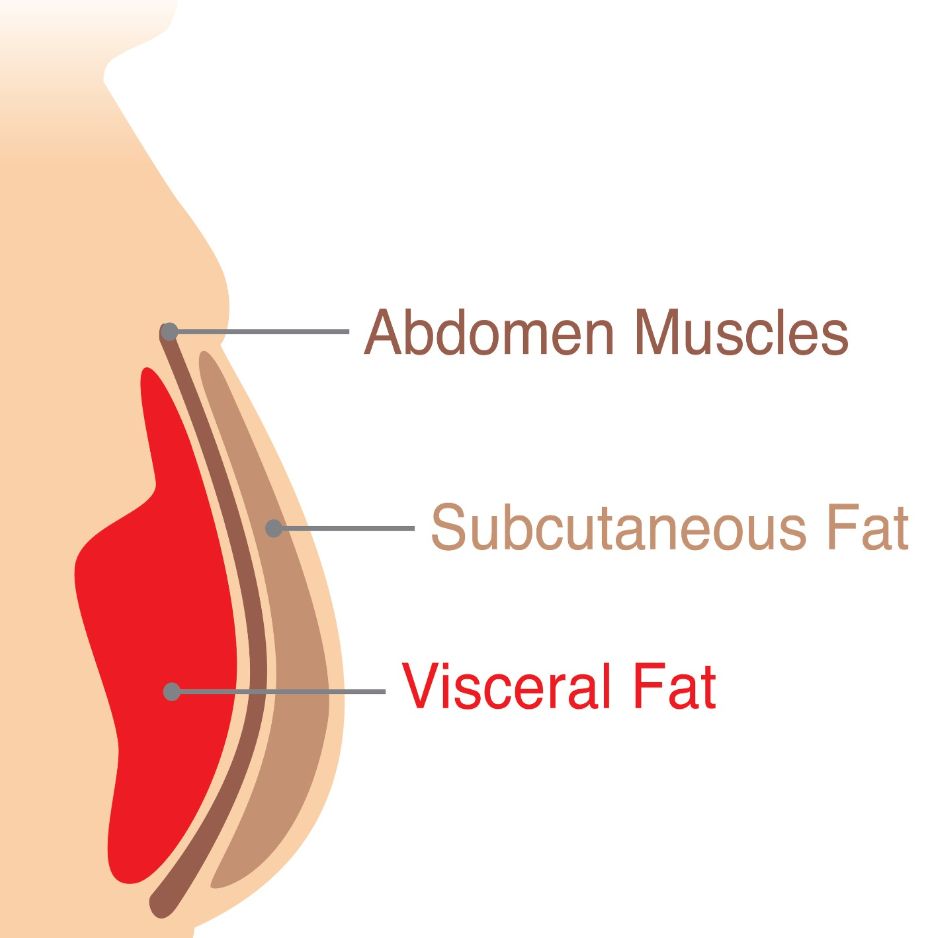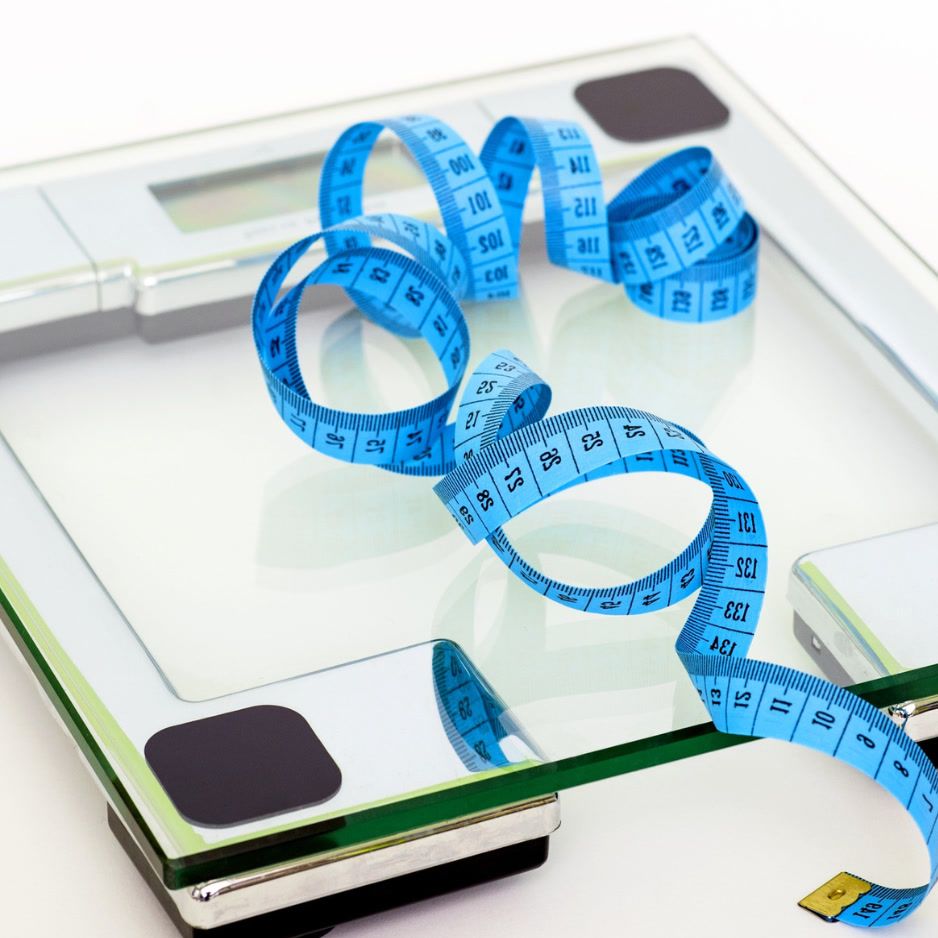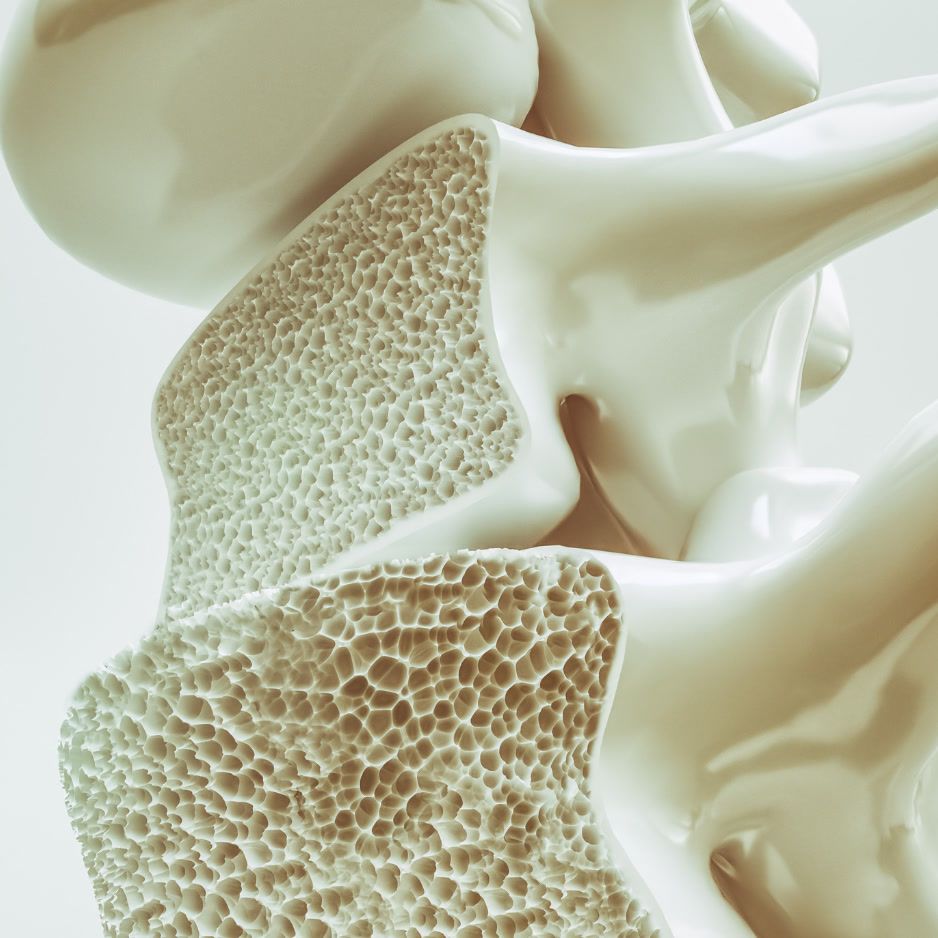Muscle Soreness After Workout: Causes, Relief, Prevention

Muscle Soreness After Workout: Causes, Relief, Prevention
Muscle soreness can strike anyone—from first-time gym-goers to seasoned athletes logging double-day sessions. The discomfort is normal, but the right strategies can shorten your recovery window and keep training on schedule.
Bottom line: Not all soreness is created equal. Understanding the difference between healthy post-workout discomfort and pain that could indicate an injury is the first step toward smarter training.
Table of Contents
- Acute Soreness vs. DOMS—Know Your Pain Timeline
- Why Your Muscles Get Sore (Hint: It’s Not Lactic Acid)
- Preventive Tactics: Train Hard, Hurt Less
- Recovery Roadmap: 8 Evidence-Backed Relief Methods
- Red-Flag Symptoms—When to See a Professional
- Supplement Snapshot: What Helps, What’s Hype?
- FAQ: Quick Answers to Google’s Top Questions
- Track Your Progress with a BodySpec DEXA Scan
1. Acute Soreness vs. DOMS—Know Your Pain Timeline
| Type | Onset | Peak | Feels Like | Typical Cause |
|---|---|---|---|---|
| Acute Exercise-Induced Soreness | During exercise or immediately after | Fades within a few hours | Burning or tightness in the working muscle | Temporary metabolite buildup and pH changes |
| Delayed Onset Muscle Soreness (DOMS) | 12–24 h post-workout | 24–72 h after exercise | Tenderness, stiffness, reduced range of motion | Microscopic muscle-fiber tears & inflammation (Healthline) |
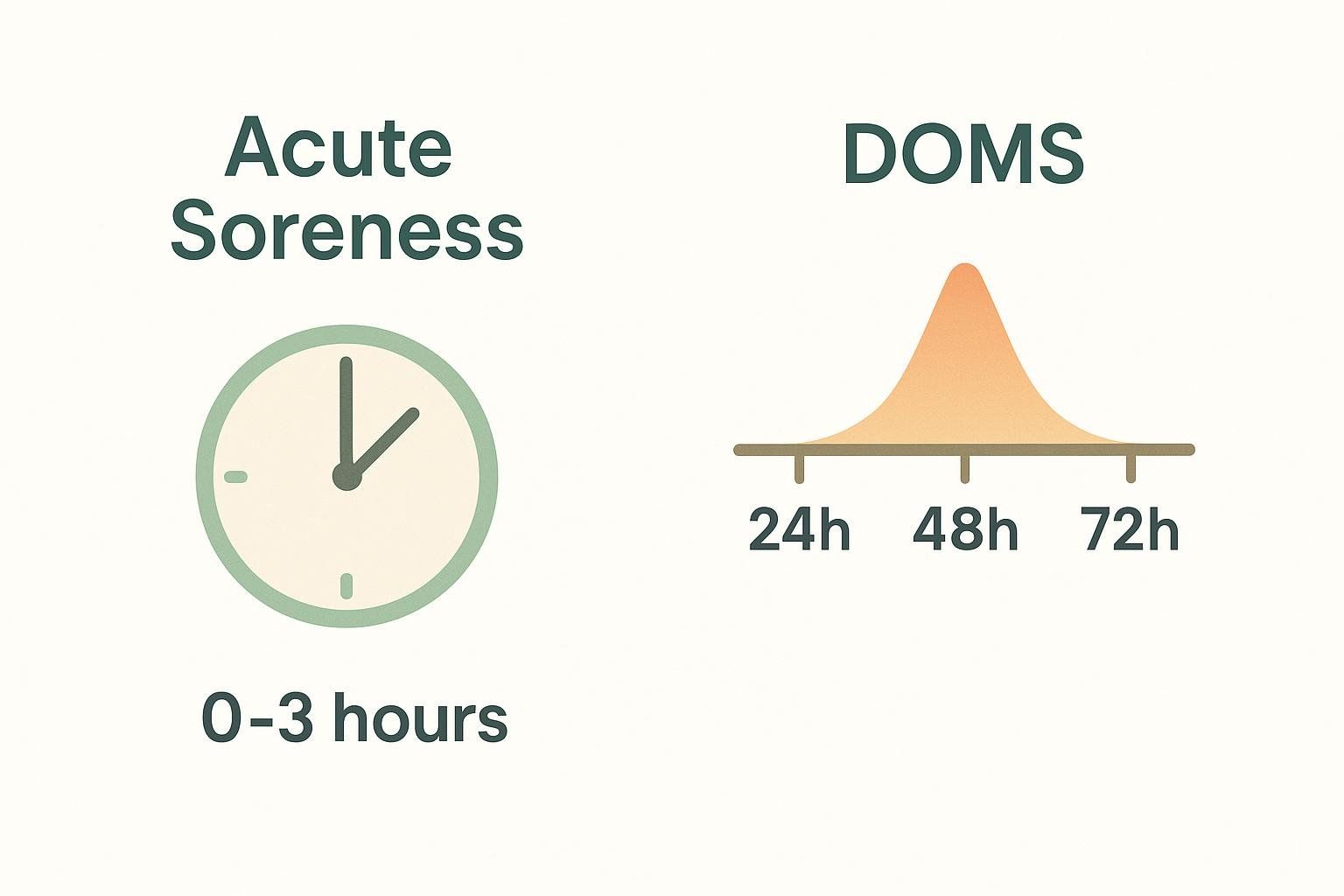
Understanding which bucket your discomfort belongs in helps you choose the right relief strategy—and decide whether you can safely train again.
2. Why Your Muscles Get Sore (Hint: It’s Not Lactic Acid)
For decades, lactic acid was blamed for next-day aches. Research now shows lactic acid is cleared from your muscle within about an hour of finishing a workout and is not responsible for DOMS (Houston Methodist). Instead, eccentric contractions (think lowering a dumbbell or running downhill) create microscopic damage in muscle fibers. Your immune system sends in inflammatory messengers to repair the tissue—this inflammatory response results in the swelling and tenderness you feel 24–48 hours later.
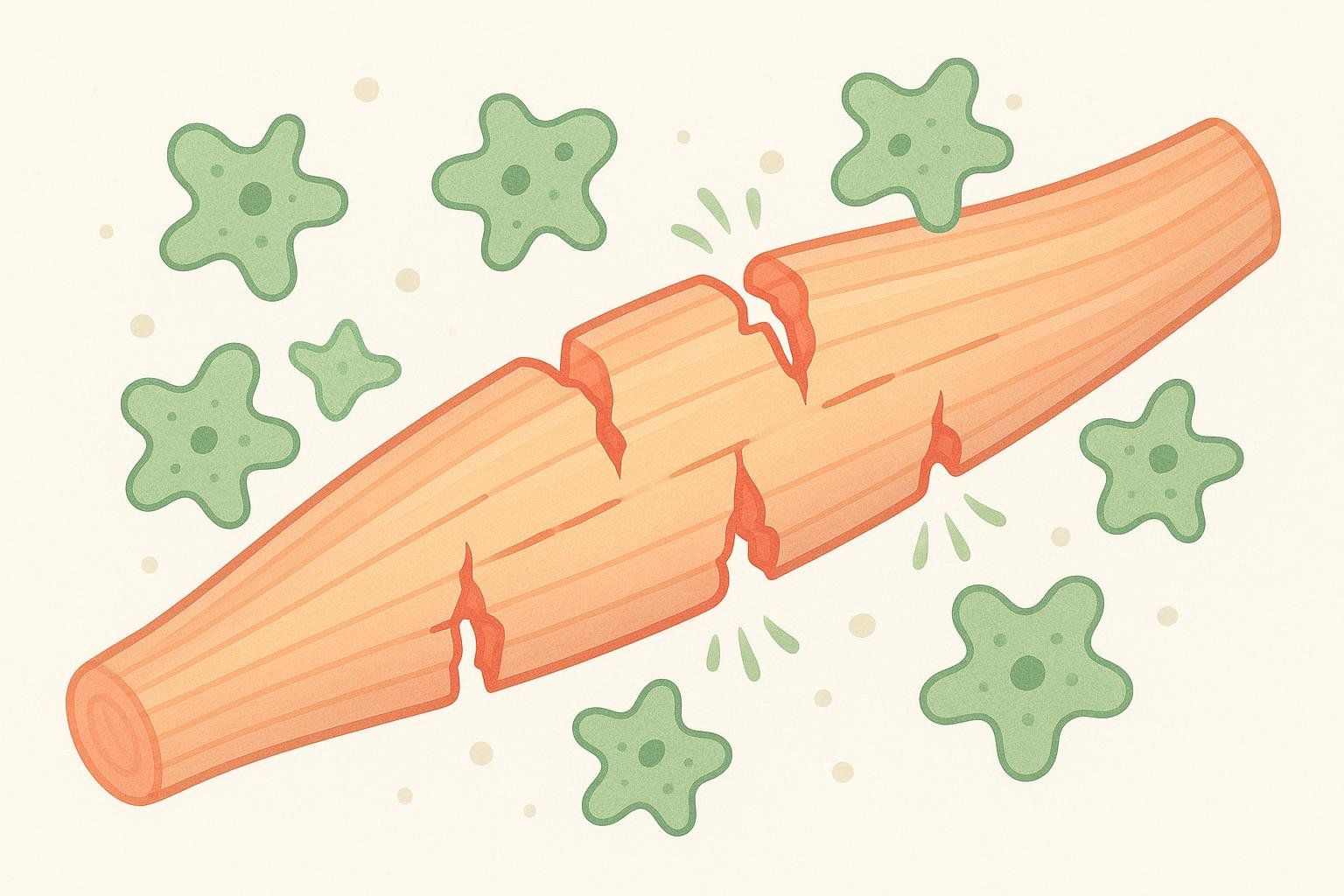
Key contributors:
- Novel stimulus – first time trying a movement, weight, or volume.
- Eccentric loading – lengthening under tension generates more micro-tears.
- Insufficient recovery – poor sleep, hydration, or nutrition amplifies the inflammatory response.
3. Preventive Tactics: Train Hard, Hurt Less
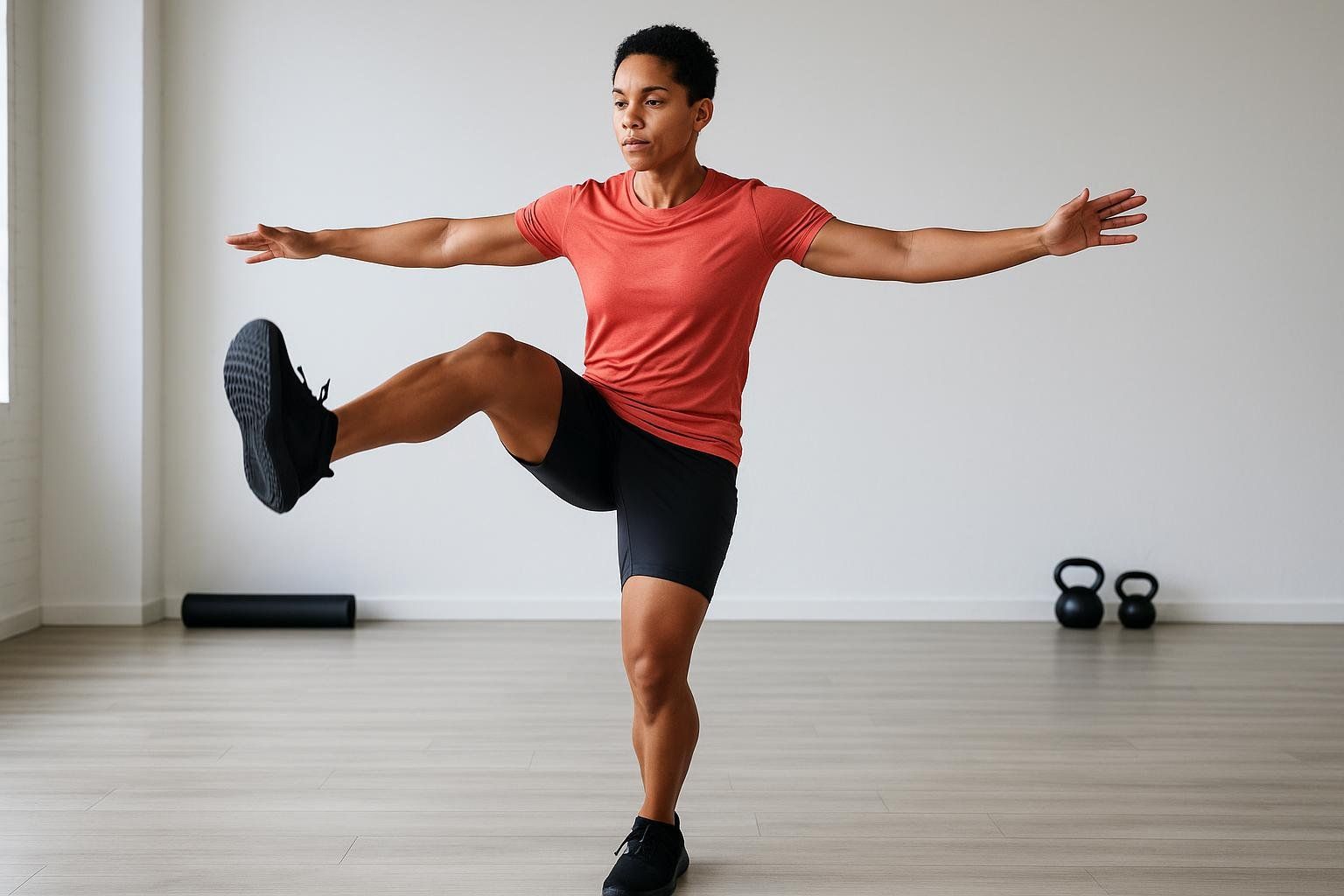
- Warm Up Dynamically (5–10 min). Leg swings, arm circles, and light cardio increase muscle temperature and prepare joints for load.
- Progress Gradually (The 10 % Rule). Rapidly increasing training intensity or volume is a common cause of severe DOMS. Increase total training load by no more than ~10 % per week.
- Master Form Before Weight. Quality reps reduce unnecessary strain on connective tissue.
- Cool Down Actively. Five minutes of low-intensity cycling or jogging flushes metabolites and promotes blood flow.
- Prioritize Sleep & Nutrition. Aim for 7–9 hours per night and 1.6–2.2 g of protein per kg of body weight for recovery, as outlined in our protein guide.
- Stay Hydrated. Even 1–2 % dehydration can magnify perceived soreness.
4. Recovery Roadmap: 8 Evidence-Backed Relief Methods
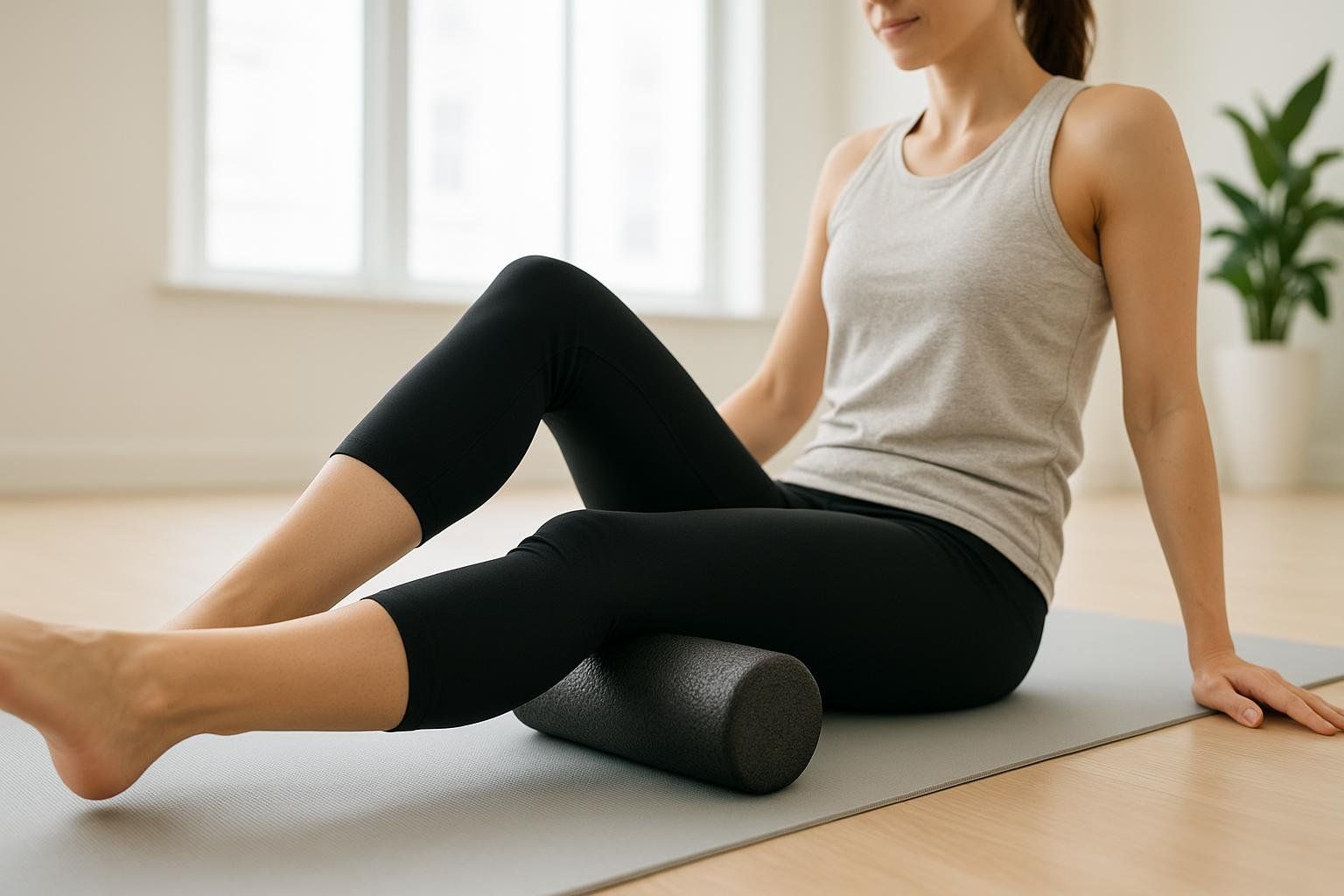
| # | Strategy | Evidence & Tips |
|---|---|---|
| 1 | Active Recovery | Light cycling or walking boosts circulation without further damage. |
| 2 | Foam Rolling | Self-myofascial release can reduce DOMS intensity and improve range of motion; technique demos in our foam-rolling guide. |
| 3 | Contrast Therapy | Alternating hot-cold showers or baths may dampen inflammation and perceived pain. |
| 4 | Compression Garments | Sleeves or tights enhance venous return and reduce swelling post-exercise. |
| 5 | Sports Massage or Massage Gun | Professional or percussive massage 48 h after training can accelerate recovery. |
| 6 | Omega-3 Fatty Acids | 1–3 g EPA+DHA daily lowers inflammatory markers and DOMS severity. |
| 7 | Curcumin/Turmeric | 150–500 mg of standardized curcumin extract twice daily shows modest soreness reductions. |
| 8 | Quality Sleep | Growth hormone release during deep sleep drives muscle repair—optimize with our sleep optimization tips. |
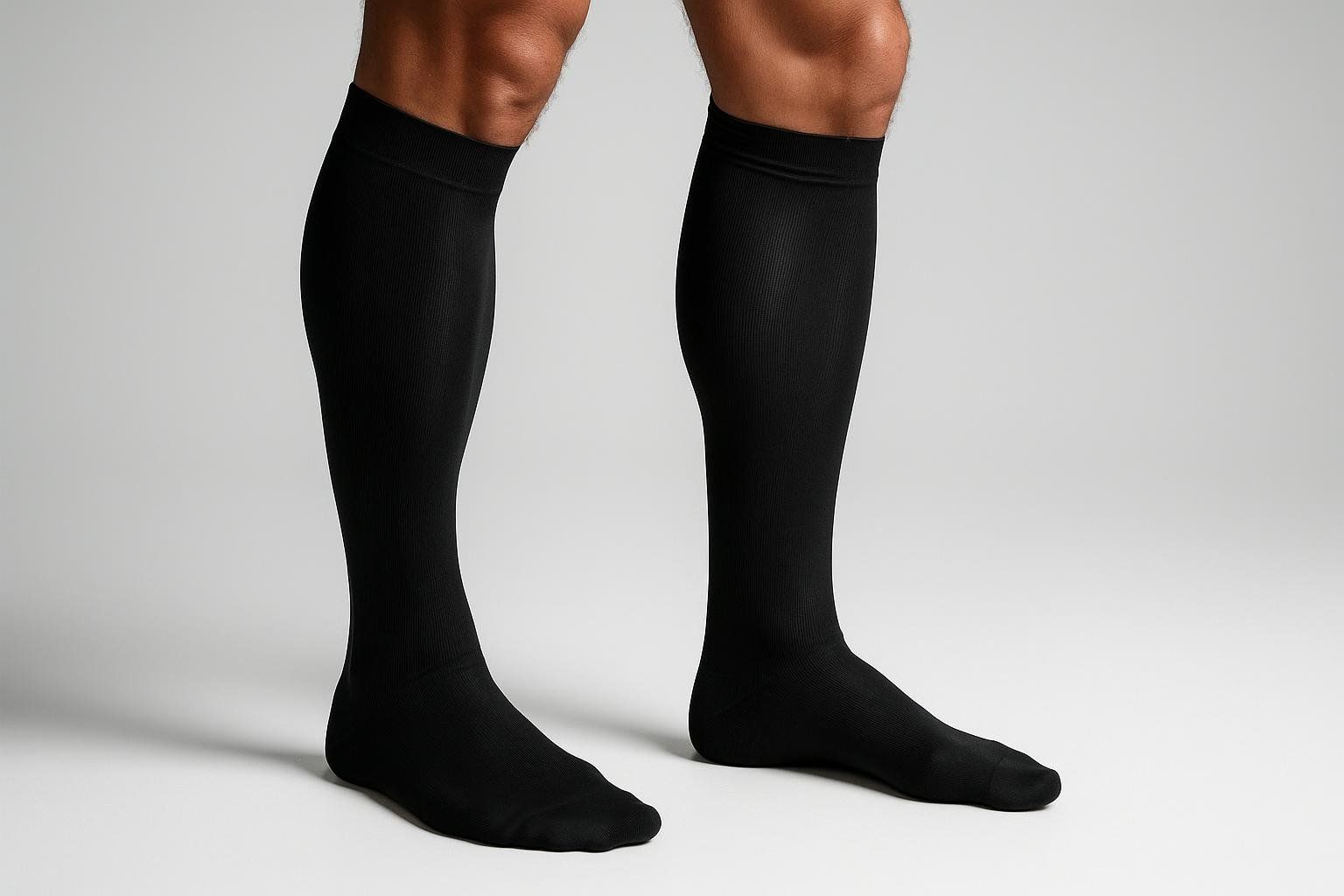
5. Red-Flag Symptoms—When to See a Professional
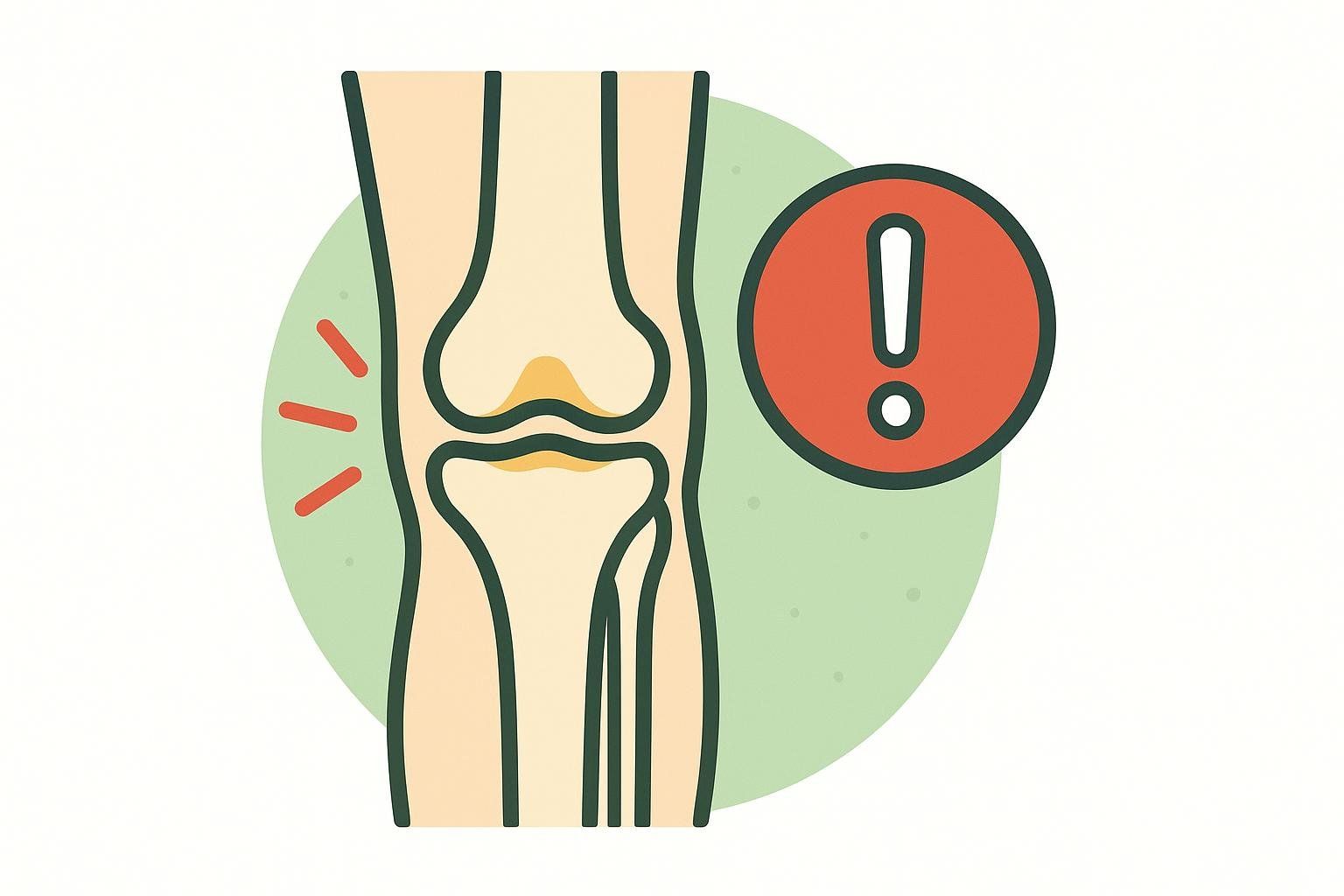
While mild-to-moderate soreness is part of training adaptation, seek medical evaluation if you notice:
- Sharp, localized pain that worsens with movement.
- Visible swelling or bruising around a joint.
- Loss of function (you can’t bear weight or lift the limb).
- Dark urine and extreme whole-body soreness (possible rhabdomyolysis).
- Symptoms persisting > 7 days or interfering with daily tasks (Mass General Brigham).
6. Supplement Snapshot: What Helps, What’s Hype?
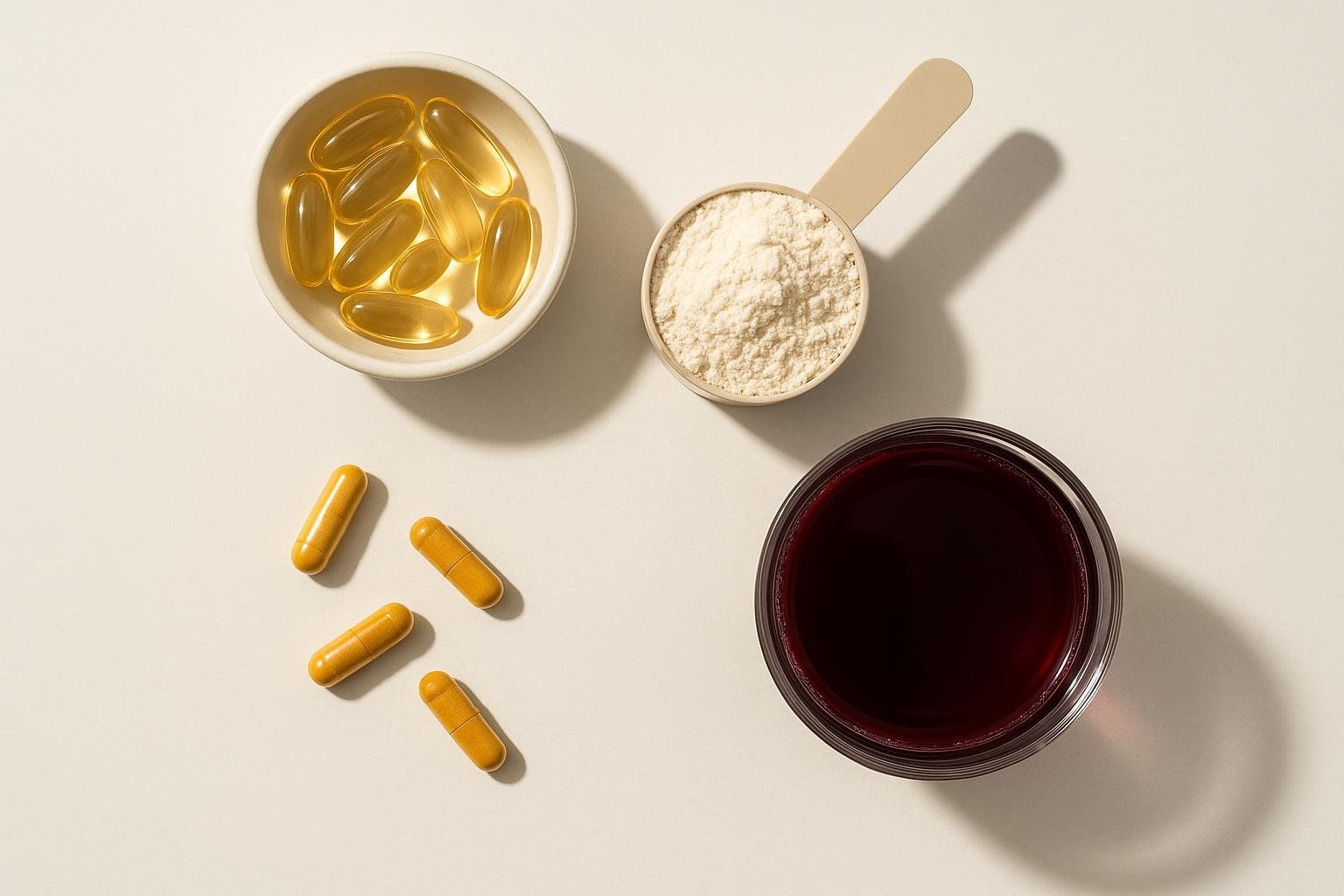
| Supplement | Typical Dose | Evidence Grade* | Notes |
|---|---|---|---|
| BCAAs | 5–10 g pre/post | C | Mixed results; benefits likely only if daily protein is low. |
| Curcumin | 150–500 mg twice daily | B | Reduces inflammatory cytokines; add black pepper extract for absorption. |
| Omega-3 (EPA+DHA) | 1–3 g/day | B | Consistent reduction in DOMS markers. |
| Tart Cherry Juice | 8–12 oz pre-sleep | B | Polyphenols may improve sleep and soreness. |
| Collagen + Vitamin C | 10–15 g 30 min pre-exercise | C | Early research suggests tendon support. |
| Creatine Monohydrate | 3–5 g/day | A | Indirectly aids recovery by boosting muscle phosphocreatine stores. |
*Evidence Grade: A = strong human trials; B = moderate; C = limited/inconclusive.
7. FAQ: Quick Answers to Google’s Top Questions
Q: Should I still work out when I’m sore?
Light activity is usually fine and can even speed recovery. Skip intense loading of the same muscle group until soreness drops below a 3 on a 1-to-10 pain scale, where 10 is the worst imaginable pain.
Q: Does stretching help DOMS?
Static stretching feels good but has minimal effect on soreness duration; dynamic warm-ups are more beneficial for prevention.
Q: How long should muscle soreness last?
For most workouts, DOMS resolves within 3–5 days. Anything longer may indicate overtraining or injury.
Q: Are NSAIDs safe for soreness?
Occasional use can blunt pain, but chronic NSAID use may impede muscle adaptation and carries GI/cardiovascular risks (Mayo Clinic). Consider acetaminophen or non-drug strategies first.
8. Track Your Progress with a BodySpec DEXA Scan
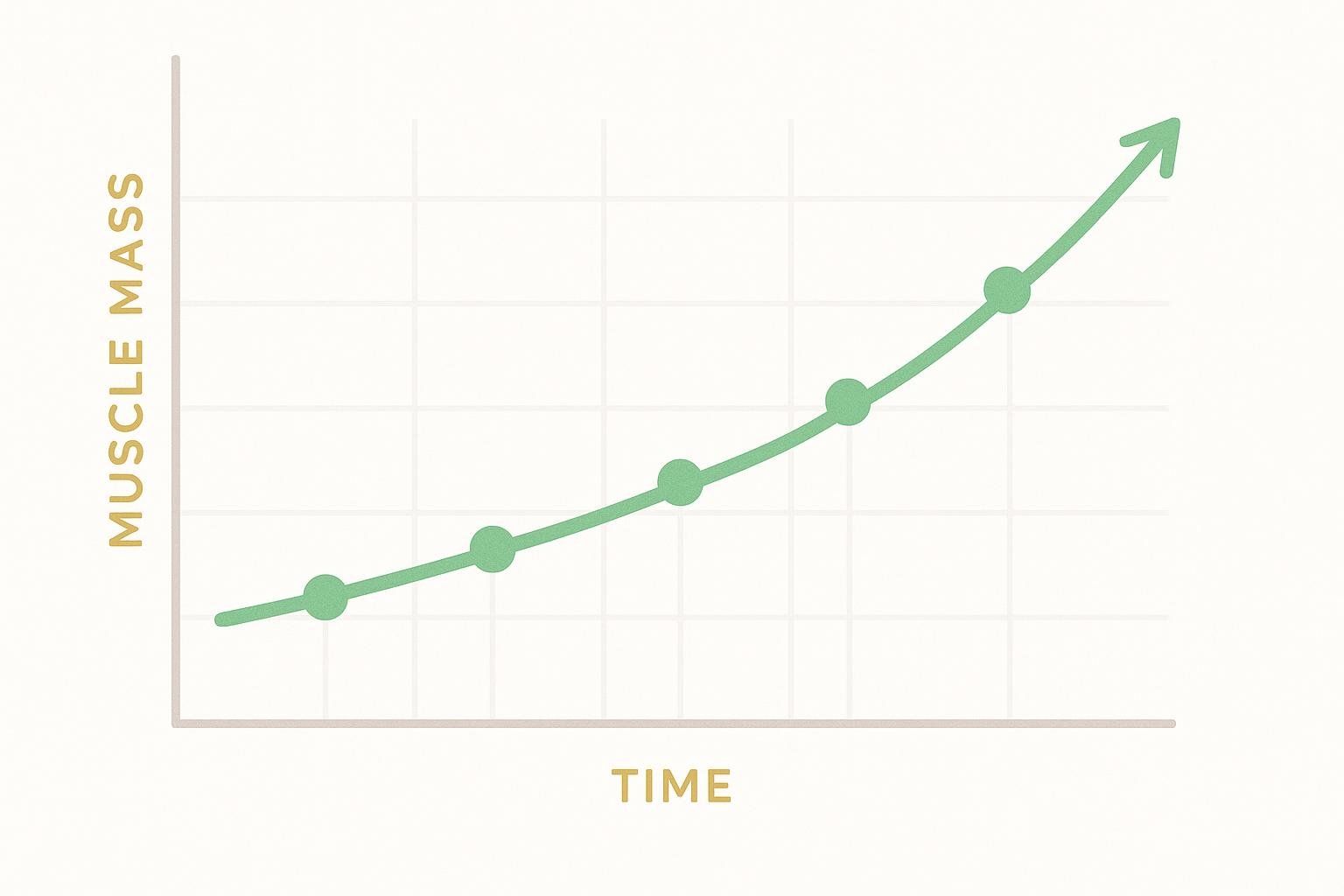
Feeling less sore is reassuring—but verifying training outcomes with data is even better. A BodySpec DEXA scan provides precise lean-mass, fat-mass, and bone-density metrics you can compare against training volume and recovery inputs. Use these reports to:
- Quantify actual muscle gain, not just scale weight shifts.
- Check whether your recovery plan supports hypertrophy.
- Detect imbalances that may predispose you to injury.
Monitoring soreness intensity alongside objective metrics—training load, sleep duration, hydration status, scheduled active recovery days, and periodic DEXA scans—creates a feedback loop that helps you fine-tune recovery and keep progressing safely.
